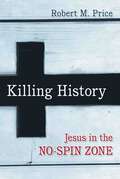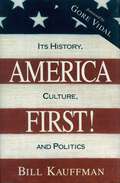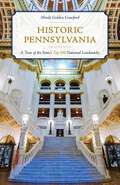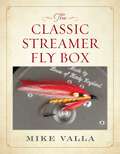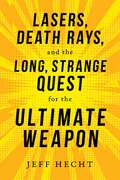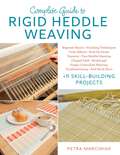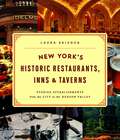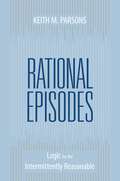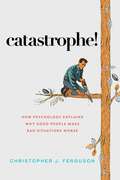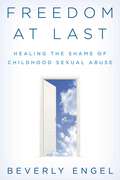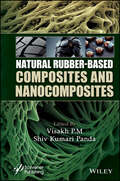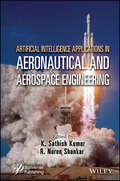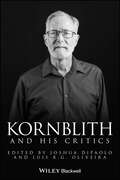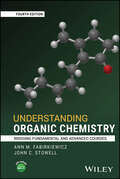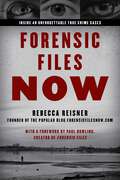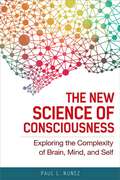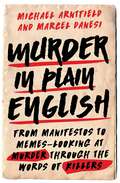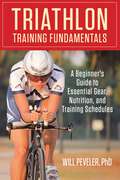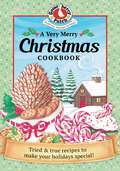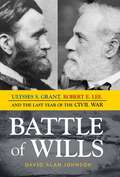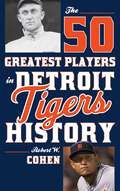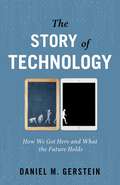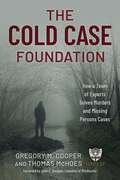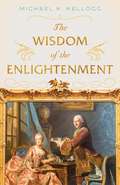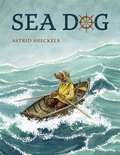- Table View
- List View
Killing History: Jesus In The No-Spin Zone
by Robert M. PriceKilling Jesus, the bestselling blockbuster by Bill O'Reilly, claims to be a purely historical account of the events in the life of Jesus leading up to his crucifixion. New Testament scholar Robert M. Price (a member of the Jesus Seminar) shows how unfounded this claim is in this critical review of O'Reilly's work. In fact, he judges the book to be the number one source of misinformation on Jesus today. Ignoring over one hundred years of New Testament scholarship, O'Reilly and his coauthor, Martin Dugard, have produced what Price describes as a Christian historical thriller that plays fast and loose with the facts. Price goes through the key events of Jesus' later life as described in the gospels and retold in Killing Jesus, painstakingly showing in each case what scholars know and don't know. Using humor, down-to-earth analogies, and witty sarcasm-not unlike O'Reilly's own interview style-Price makes it clear that O'Reilly's book is more historical novel than a work of serious history. By cobbling together the four gospel stories, ignoring the contradictions, and adding plenty of quasi-historical background embellishments, O'Reilly and Dugard have created a good narrative that resonates with a lot of Christians. Entertaining reading this may be, but history it is not. Killing History provides lay readers with an accessible introduction to New Testament scholarship while showing the many problems in O'Reilly's book.
America First!: Its History, Culture, and Politics
by Bill KauffmanAmerica First! is a rarity among political books: first published in 1995, it remains more timely, relevant, and even urgent than ever. Lively and iconoclastic, it explores the rich heritage, the turbulent present, and the possible future of the political and cultural tendency known as "America First." Bill Kauffman, a columnist for the American Conservative, examines the nineteenth-century underpinnings and twentieth-century eruptions of American isolationism and nationalism, which are the fault lines along which the politics of the twenty-first century are cleaving. In a new preface and epilogue written especially for this reissue, he traces the evolution of America First sentiment over the past twenty years: from its near-eclipse in the war hysteria of the George W. Bush administration to its revival in 2016 with the populist campaigns of Donald Trump and Senator Bernie Sanders.
Historic Pennsylvania: A Tour of the State's Top 100 National Landmarks
by Mindy Gulden CrawfordHistoric Pennsylvania: A Tour of the State&’s Top 100 National Historic Landmarks is a carefully curated travel guide, written by a local historian, featuring the most intriguing and significant of the state's nationally recognized historic landmarks. This guide provides interesting anecdotes and color photography of famous homes and churches, man-made wonders set amid the splendor of nature, and the crumbling remains of the region's industrial, coal mining past. Tour the Keystone State and travel back in time with Historic Pennsylvania.
The Classic Streamer Fly Box
by Mike Valla&“The dry fly, the wet fly, and the nymph all enjoyed cherished places in an angler&’s bag of tricks; but all except the most opinionated will agree that streamer flies and bucktails; when properly selected and employed, hook more and bigger fish more often and in more places than any other type of fly rod lure.&”—Joseph D. Bates, Jr. Streamer Fly Tying and Fishing (1966)Streamers, and hair wing versions called bucktails, are versatile patterns that can be fished anywhere whether targeting landlocked salmon on a pristine Rangeley region Maine lake, largemouth bass swimming among the lily pads in a tepid southern farm pond, cutthroat trout inhabiting swift, western rivers or hypercritical browns in the Catskills. In this valuable reference for tiers and anglers alike, author Mike Valla collects here for the reader his favorite classics that are not only important from a historical perspective, but also work well to this day.100 favorite patterns including Allie&’s FavoriteBleeding ShinerBrooks&’s Honey BlondeBumblepuppyChief NeedahbehColonel BatesEdson Tiger-DarkFox&’s Yellow Optic BucktailGeneral MacArthurGooberJane CraigMissoulian SpookNine-ThreeParma BelleShushan PostmasterSpruceSupervisorThunder Creek Silver ShinerWarden&’s Worry
Lasers, Death Rays, and the Long, Strange Quest for the Ultimate Weapon
by Jeff HechtThe whole story of laser weapons with a focus on its many interesting characters and sometimes bizarre schemes The laser--a milestone invention of the mid-twentieth century--quickly captured the imagination of the Pentagon as the key to the ultimate weapon. Veteran science writer Jeff Hecht tells the inside story of the adventures and misadventures of scientists and military strategists as they exerted Herculean though often futile efforts to adapt the laser for military uses. From the 1950s' sci-fi vision of the "death ray," through the Reagan administration's "Star Wars" missile defense system, to more promising developments today, Hecht provides an entertaining history. As the author illustrates, there has always been a great deal of enthusiasm and false starts surrounding lasers. He describes a giant laser that filled a Boeing 747, lasers powered like rocket engines, plans for an orbiting fleet of robotic laser battle stations to destroy nuclear missiles, claims that nuclear bombs could produce intense X-ray laser beams, and a scheme to bounce laser beams off giant orbiting relay mirrors. Those far-out ideas remain science fiction. Meanwhile, in civilian sectors, the laser is already being successfully used in fiber optic cables, scanners, medical devices, and industrial cutting tools. Now those laser cutting tools are leading to a new generation of laser weapons that just might stop insurgent rockets. Replete with interesting characters, bizarre schemes, and wonderful inventions, this is a well-told tale about the evolution of technology and the reaches of human ambition.
Complete Guide to Rigid Heddle Weaving: Beginner Basics, Finishing Techniques, Color Effects, Pick-up Sticks, Tapestry, Two-Heddle Weaving, Clasped Weft, Krokbragd, Finger-Controlled Weaving, Troubleshooting, And Much More Plus 11 Skill-building Projects
by Petra MarciniakUnlock the full potential of your rigid heddle loom with The Complete Guide to Rigid Heddle Weaving, featuring expert tips and 11 engaging projects that will take your weaving skills from beginner to mastery!Whether you have just purchased your first rigid heddle loom or have been weaving for years, The Complete Guide to Rigid Heddle Weaving will have the answers and instructions for your small loom weaving questions and explorations. All the basics from measuring warp and weft to setting up the loom and troubleshooting common problems are covered. Detailed instructions and photo illustrations make it easy to follow along. The rigid heddle loom is a beginning weaver&’s best friend, and you&’ll soon be weaving like a pro!Already woven a few pieces and looking for a new challenge? There are so many new techniques to try, including tapestry, Saori, color effects, openwork, Krokbragd, and more. Learn to work with pick-up sticks and two heddles to add more than just plain weave to your repertoire. This is your guide to exploring the full range of capabilities of your favorite little loom.For hands-on practice and to try a new technique with ensured success, turn to the 11 sample projects. Each includes a complete materials list, set up notes, and step-by-step instructions. Make a zippered pouch using the clasped weft technique, dish towels in houndstooth, an openwork café curtain, Krokbragd coasters, a Saori wall hanging, and more.
New York's Historic Restaurants, Inns & Taverns: Storied Establishments from the City to the Hudson Valley
by Laura BrienzaNew York&’s Historic Inns, Restaurants, and Taverns explores the history of over forty institutions throughout New York City and the Hudson Valley that are still in existence today. Travel to the tavern where George Washington hosted a farewell dinner for his officers at the close of the American Revolution. Eat steak at one of the city&’s oldest steakhouses. Rest your head in one of the original houses built by Dutch colonists in the Hudson Valley. Part historical record and part travelogue, the book tells tales about the region&’s most historical and storied establishments.
Rational Episodes: Logic for the Intermittently Reasonable
by Keith M. ParsonsLogic is the skill that enables humans to think clearly, accurately, and rigorously and so to draw only the inferences that the evidence warrants. Some people, like scientists, engineers, mathematicians, and computer programmers, get plenty of on-the-job practice in thinking logically. The rest of us generally don't. In this accessible, concise yet comprehensive introduction to a sometimes-formidable subject, philosopher Keith Parsons presents elementary topics in logic for people who have little background in mathematics or science and have no career goals in those fields. Parsons presupposes no specialized background and strives to introduce even abstract concepts in an intuitive and unintimidating way. His informal, conversational style leads the reader painlessly, even entertainingly, through three essential areas of logic. The first part of the book deals with sentential and predicate logic, as well as inductive and scientific reasoning, including inference to the best explanation. The second part explains basic probability, Bayes' Theorem, and why thinking about probability is so prone to error and illusion. The third part considers informal reasoning and critical thinking, including such topics as rhetoric, fallacies, political spin, and the detection of pseudoscience and pseudohistory. Why be logical? Even if you're a poet, an artist, or just a free spirit, logic can help you determine the facts behind the political propaganda, religious claims, advertising, and sales talk that we are all subjected to. As a logically literate person, you will be a better-informed citizen, wiser consumer, and a clearer thinker.
Catastrophe!: How Psychology Explains Why Good People Make Bad Situations Worse
by Christopher J. FergusonWhat Happens To Our Minds During Pandemics, Natural Disasters, Terrorist Attacks, and Other Extreme Calamities?Whether natural or man-made, local or global, disasters impact our thinking and behavior on both a personal and societal level. Even rather ordinary crises in our personal lives like the loss of a job or the end of a relationship trigger overwhelming feelings. At the societal level, group anxieties coupled with the moral pressure to conform can send us all down the path to ruin. Why does this happen and, through understanding human psychology, how can we prevent this in the future?In this highly original and engagingly written book, Author Christopher J. Ferguson examines how pandemics, natural disasters, terrorist attacks, and other events of mass hysteria impact our psychology and prevent us from adequately responding to, preventing, or learning from those calamities.From the rush to hoard toilet paper during the COVID-19 pandemic lockdowns, to the disconnect between procedure and practice surrounding massive wildfires, to debates about the science behind climate catastrophes, and shifts after traumatic events like 9/11 and the murder of George Floyd, The Psychology of Catastrophe uses in-depth case studies to reveal how moments of societal upheaval affect the psychology of citizens.Though we have often failed to predict, respond to, and learn from catastrophes, we have nonetheless made remarkable progress. Ferguson concludes by offering strategies to help us make better choices during crises in our own lives and providing solutions for how we as a society can better navigate misfortune in the future.
Freedom at Last: Healing the Shame of Childhood Sexual Abuse
by Beverly EngelChildhood sexual abuse (CSA) is not only an assault on the body—it is also an assault on the mind and spirit. In addition to imposing a significantly higher rate of conditions like depression, anxiety, post-traumatic stress disorder, sexual exploitation, intimate partner violence, suicidality, and substance abuse, the most devastating consequences of childhood sexual abuse is shame. Freedom at Last will help former victims recover from all aspects of this extreme shame and its damaging after-effects. In this groundbreaking book, leading psychotherapist Beverly Engel reveals the truth about how shame affects victims, explains the nuances behind the emotion of shame, and teaches readers how to develop more self-awareness about how shame has manifested in their lives, along with powerful and effective shame-reduction strategies. Not only does shame from CSA cause a multitude of problems, this very same shame stands in the way of a victim&’s ability to recover and heal..Freedom at Last offers effective strategies for not only healing the negative effects of abuse-related shame, but also the emotional barriers to disclosing abuse and seeking help due to difficulties trusting others and self-blame. Using cutting-edge research along with her thirty-five years of experience working with victims of child sexual abuse, Engel provides a blueprint for readers to overcome the debilitating effects of shame, including strategies for emotional release, disclosing the abuse, practicing self-forgiveness, eliminating shame-causing behaviors, including sexual compulsions and addictions.
Natural Rubber-Based Composites and Nanocomposites (Thermoplastic Bionanocomposites Series)
by Visakh. P. M. Shiv Kumari PandaDiscover the latest research in the field of natural rubber composites in this comprehensive guide to the fundamentals and applications of this innovative field. This book summarizes recent research accomplishments in the area of natural rubber nanocomposites, serving as a comprehensive reference for academics and professionals working to research and develop this growing field. Its application-oriented approach explores solutions to both fundamental and applied problems, covering a wide range of topics, including the state-of-the-art in natural rubber composites and nanocomposites, emerging challenges and opportunities, and detailed descriptions of various natural rubber-based composites and nanocomposites. Through expert insights and real-world case studies, the chapters will provide an up-to-date look at recent major innovations in this field. Readers will find the volume: Serves as a one-stop reference for natural rubber-based composites, blends, and nanocomposites; Encompasses a large scope, including natural rubber-bamboo composites, natural rubber-bio-nanocomposites, biodegradation of natural rubber and its composites, and nanocomposites; Includes chapters on natural rubber recycling; the use of green additives in eco-friendly compounds based on natural rubber; and radiative protective qualities of natural rubber based polymer composites; Explores the applications helping researchers find solutions to both fundamental and applied problems in the area of natural rubber-based nanocomposites. Audience Rubber scientists, rubber technologists, polymer scientists, academics, and industry professionals interested in the many applications of natural rubber.
Artificial Intelligence Applications in Aeronautical and Aerospace Engineering
by K. Sathish Kumar R. Naren ShankarThis book is a comprehensive guide for anyone in the aeronautical and aerospace fields who wants to understand and leverage the transformative power of artificial intelligence to enhance safety, optimize performance, and drive innovation. The field of aeronautical and aerospace engineering is on the brink of a transformative revolution driven by rapid advancements in artificial intelligence (AI). This book analyzes AI’s multifaceted impact on the industry, exploring AI’s potential to address complex challenges, optimize processes, and push technological boundaries with a focus on enhancing safety, security, innovation, and performance. By blending technical insights with practical applications, it provides readers with a roadmap for harnessing AI to solve complex challenges and improve efficiency in aeronautics. Ideal for those seeking a deeper understanding of AI’s role in aeronautical and aerospace engineering, this book offers real-world applications, case studies, and expert insights, making it a valuable resource for anyone aiming to stay at the forefront of this rapidly evolving field. Readers will find this book: Examines AI’s transformative role in aerospace and aeronautics, from enhancing safety to driving innovation and optimizing performance; Highlights real-time applications, addressing AI’s role in boosting operational efficiency and safety in the aerospace and aeronautical industries; Offers insights into emerging AI technologies shaping the future of aerospace and aeronautical systems; Features real-world case studies on AI applications in autonomous navigation, predictive maintenance of aircraft, and air traffic management. Audience Aeronautical and aerospace engineers, AI researchers, students, and industry professionals seeking to understand and apply AI solutions in areas like safety, security, and performance optimization.
Kornblith and His Critics (Philosophers and their Critics)
by Joshua Dipaolo LUIS R.G. OLIVEIRAA wide-ranging engagement with one of contemporary epistemology's most influential thinkers Hilary Kornblith is one of the world's leading philosophers theorizing about knowledge and related issues. A key figure in the naturalized epistemology tradition, Kornblith integrates traditional empiricism with contemporary cognitive science, rejecting inward-looking, first-person approaches in favor of a third-person, scientifically grounded perspective on mind and knowledge. Kornblith's contributions have reshaped debates about the nature and structure of knowledge, justification, and epistemic normativity; he has challenged the legitimacy of conceptual analysis and the reliability of reflection and reasoning, besides charting and defending a mature and self-consciously naturalistic philosophical methodology. By exploring this terrain, Kornblith and His Critics offers an in-depth examination of some of the most unique and innovative work in the last 40 years of anglophone epistemology. This volume brings together fifteen original essays by leading philosophers engaging with Kornblith's work, each written specifically for this collection. Organized into three main thematic sections – Knowledge and Justification, Reflection and Inference, and Naturalism and Methodology – the collection systematically traces and tests the implications of Kornblith's work across key debates. The volume also includes a substantial reply from Kornblith, offering his own response to the critical challenges raised by the incisive contributions. Kornblith and His Critics is ideal for graduate and advanced undergraduate philosophy students, especially those taking a variety of courses on epistemology and philosophical methodology. Key features include: A complete and detailed overview of how Kornblith's work compares with, and contributes to, key debates in epistemology. Cutting-edge engagement with the foundations, nature, and future of naturalized epistemology. Thorough discussion of core issues in epistemology: from the nature of knowledge, justification, and inference to the epistemic value of reflection and conceptual analysis. A lengthy and unique reply by Hilary Kornblith, directly addressing the critical challenges raised by the incisive contributions. A systematic and thematic structure for easy integration into graduate and upper-level undergraduate courses. Kornblith and His Critics is a vital resource for researchers and instructors within philosophy programs in both MA and PhD curricula, as well as general readers interested in post-analytic and empirically-informed philosophy.
Understanding Organic Chemistry: Bridging Fundamental and Advanced Courses
by Ann M. Fabirkiewicz John C. StowellProvides a clear and cohesive path from fundamentals to advanced organic chemistry Understanding Organic Chemistry: Bridging Fundamental and Advanced Courses equips students with the conceptual tools and technical knowledge needed to transition confidently from lower-division coursework to upper-level study and research in organic chemistry. By integrating synthetic and physical organic chemistry, this popular textbook helps students understand reaction mechanisms, stereochemical principles, and synthetic strategies in a way that is both rigorous and accessible. The new fourth edition continues its dual focus on theoretical grounding and hands-on problem-solving, making it ideal for those who want to deepen their command of the subject and begin reading primary research literature with confidence. The text incorporates substantial updates throughout, including contemporary examples from synthetic chemistry, enhanced coverage of chiral catalysts and ene reactions, and newly developed in-text problem sets designed to promote self-guided learning. The chapters are structured around major themes—such as spectroscopy, reaction mechanisms, and functional group transformations—and include clear, concise explanations followed by extensive end-of-chapter exercises. Select problem answers are now available in the text, with full solutions and teaching materials accessible to instructors through a companion website. A balanced treatment of synthetic and physical organic chemistry that promotes a deeper conceptual understanding of the subject, Understanding Organic Chemistry: Introduces modern synthetic topics and recent advances in bond-forming methodologiesProvides up-to-date coverage of spectroscopy, functional group transformations, and synthesis designExplains stereochemistry and reaction mechanisms in a clear, structured manner ideal for advanced learnersEnables students to critically engage with primary research literature in organic chemistry With a student-friendly format that supports both coursework and self-directed study, Understanding Organic Chemistry: Bridging Fundamental and Advanced Courses, Fourth Edition, is ideal for junior- and senior-level undergraduates as well as first-year graduate students enrolled in intermediate or advanced organic chemistry courses. It is also a valuable reference for chemistry majors preparing for careers or further study in pharmaceuticals, materials science, or academic research.
Forensic Files Now: Inside 40 Unforgettable True Crime Cases
by Rebecca ReisnerPerhaps no other television show captures our innate fascination with crime and criminals better than the original Forensic Files. Including murders, insurance fraud, hit-and-runs, and kidnappings, all cases featured on the show are solved in large part with the help of forensic science like DNA evidence.In Forensic Files Now: Inside 40 Unforgettable Cases, author Rebecca Reisner shares her own gripping retellings — adapted from her popular blog, ForensicFilesNow.com — of 40 favorite cases profiled on the show along with fascinating updates and personal interviews with those directly involved. Featuring classic cases like the Tennessee brothers who terrorized locals for years until the feds rode into town, the Texas lovebirds who robbed a grave in an insurance fraud plot that made international headlines, the Ivy League-educated physician who attempted a fresh start by burying his wife in the basement, and some cases so captivating that they have sparked spinoff miniseries or documentaries of their own, this book will enthrall readers with its vivid recaps and detailed updates.Also featuring an in-depth interview with Forensic Files creator Paul Dowling and a profile on the show&’s beloved narrator, Peter Thomas, Forensic Files Now is a must-read for diehard Forensic Files fans and a welcome find for true crime readers looking for more riveting and well-told stories.
The New Science of Consciousness: Exploring the Complexity of Brain, Mind, and Self
by Paul L. NunezThis book explains in layperson's terms a new approach to studying consciousness based on a partnership between neuroscientists and complexity scientists. The author, a physicist turned neuroscientist, outlines essential features of this partnership. The new science goes well beyond traditional cognitive science and simple neural networks, which are often the focus in artificial intelligence research. It involves many fields including neuroscience, artificial intelligence, physics, cognitive science, and psychiatry. What causes autism, schizophrenia, and Alzheimer's disease? How does our unconscious influence our actions? As the author shows, these important questions can be viewed in a new light when neuroscientists and complexity scientists work together. This cross-disciplinary approach also offers fresh insights into the major unsolved challenge of our age: the origin of self-awareness. Do minds emerge from brains? Or is something more involved? Using human social networks as a metaphor, the author explains how brain behavior can be compared with the collective behavior of large-scale global systems. Emergent global systems that interact and form relationships with lower levels of organization and the surrounding environment provide useful models for complex brain functions.By blending lucid explanations with illuminating analogies, this book offers the general reader a window into the latest exciting developments in brain research.
Murder in Plain English: From Manifestos to Memes—Looking at Murder through the Words of Killers
by Marcel Danesi Michael ArntfieldThis is the first book to examine murder through the written word—not only the writings of the killers themselves, but also the story of murder as told in literary fiction and the crime dramas that are now a staple of film and television. The authors—a criminologist specializing in cold cases, written evidence, and forensic science, and an anthropologist who has dealt with the signs and ciphers of organized crime and street gangs in his previous work—are widely recognized experts in this emerging specialty field. Based on extensive research and interviews with convicted murderers, the book emphasizes the often-overlooked narrative impulse that drives killers, with the authors explaining how both mass and serial murderers perceive their crimes as stories and why a select few are compelled to commit these stories to writing whether before, during, or after their horrific acts.The book also analyzes the written work of killers, using a combination of machine-based linguistic patterning, predictive modeling, and symbolic interpretation, to make sense of the screeds of everyone from the Son of Sam and the Zodiac Killer to the Columbine attackers, the Unabomber, and the recent spate of mass shooters using social media as their preferred narrative platform. They present a theoretical perspective of murder that is based on both the criminological evidence and written works. In addition, the authors examine famous literature that has dealt ingeniously with murder and its relationship with real crime, from the Greek tragedians to Truman Capote to modern-day productions such as Making a Murderer.This unique approach offers a new means to penetrate the minds of murderers, revealing their motives as well as the wider social meanings of this age-old crime and our continuing fascination with it.
Triathlon Training Fundamentals: A Beginner's Guide to Essential Gear, Nutrition, and Training Schedules
by Will PevelerTriathlon Training Fundamentals caters directly to the beginner. Triathlon Training Fundamentals presents all of the basic information needed in plain language, from why and how to get started and what events to select, to what equipment to get and how to maintain it, to how to train for each leg of the race—swimming, biking, and running. Triathlon Training Fundamentals goes beyond laying out the basics to also tackle smaller—but equally as important—topics often overlooked in other books, like how to adjust training to fit your specific needs (such as if you have health issues, or are a youth or a woman) or how to troubleshoot equipment and health issues on race day.
A Very Merry Christmas Cookbook
by Gooseberry PatchFor a festive brunch, Country Club Eggs and Apricot-Almond Coffee Cake are sure to please. On snowy days, treat the kids to Gingerbread Pancakes and Christmas Cocoa. Warm 'em up at lunchtime with Lela's Beef & Vegetable Soup.Easy main dishes like Quick One-Pot Burrito Bowl and Sour Cream Spaghetti will help you get dinner on the table in a jiffy. Create new holiday traditions with Baked Ham with Citrus-Mustard Dressing or Mom's Barbecue Brisket. Nina's Corn Pudding, Zucchini Pecan Bread and Carrot Apple Slaw will make it a meal they'll always remember.Easy Pulled Pork for a Crowd and Aloha Chicken Wings are perfect for party time. Welcome the new year with Roasted Red Pepper Spread, Pauline's Spiced Peanuts and &“Champagne&” Punch...cheers! Of course, we couldn't forget Christmas sweets. Fill your cookie trays with Cherry Twinkles, Elf Thumbprints and Grandma's Jelly Cookies...delight everyone at dessert time with Red Velvet Poke Cake.You'll find easy-to-follow directions using familiar ingredients, plus sweet holiday memories and clever tips for creating your own sweet memories.
Battle of Wills: Ulysses S. Grant, Robert E. Lee, and the Last Year of the Civil War
by David Alan JohnsonHistorians have long analyzed the battles and the military strategies that brought the American Civil War to an end. Going beyond tactics and troop maneuvers, this book concentrates on the characters of the two opposing generals--Robert E. Lee and Ulysses S. Grant--showing how their different temperaments ultimately determined the course of the war. As author David Alan Johnson explains, Grant's dogged and fearless determination eventually gained the upper hand over Lee's arguably superior military brilliance. Delving into their separate upbringings, the book depicts Grant as a working-class man from Ohio and Lee as a Virginia aristocrat. Both men were strongly influenced by their fathers. Grant learned a lesson in determination as he watched his father overcome economic hardships to make a successful living as a tanner and leather goods dealer. By contrast, Lee did his best to become the polar opposite of his father, a man whose bankruptcy and imprisonment for unpaid debts brought disgrace upon the family. Lee cultivated a manner of unimpeachable respectability and patrician courtesy, which in the field of battle did not always translate into decisive orders. Underscoring the tragedy of this fratricidal conflict, the author recounts episodes from the earlier Mexican war (1846-1848), when Grant and Lee and many other officers who would later oppose each other were comrades in arms. This vivid narrative brings to life a crucial turning point in American history, showing how character and circumstances combined to have a decisive influence on the course of events.
The 50 Greatest Players in Detroit Tigers History (50 Greatest Players)
by Robert W. CohenThis book carefully examines the careers of the fifty men who made the greatest impact on one of the most successful franchises in the history of professional sports. Features of The 50 Greatest Players in Detroit Tigers History include quotes from opposing players and former teammates, summaries of each player&’s best season, recaps of their most memorable performances, and listings of their notable achievements.
Story of Technology: How We Got Here and What the Future Holds
by Daniel M. GersteinA leading technology expert examines ways to manage the rapid proliferation of technology and come to grips with its pervasive influence. Technology--always a key driver of historical change--is transforming society as never before and at a far more rapid pace. This book takes the reader on a journey into what the author identifies as the central organizing construct for the future of civilization, the continued proliferation of technology. And he challenges us to consider how to think about technology to ensure that we humans, and not the products of our invention, remain in control of our destinies? In this informative and insightful examination, Dr. Daniel M. Gerstein--who brings vast operational, research, and academic experience to the subject--proposes a method for gaining a better understanding of how technology is likely to evolve in the future. He identifies the attributes that a future successful technology should seek to emulate and the pitfalls that a technology developer should try to avoid. The aim is to bring greater clarity to the impact of technology on individuals and society. In particular, he considers three technologies now converging that will shape the future: biotechnology, artificial intelligence, and the "internet of things." He asks: Will we continue to develop new technologies in these fields merely because basic research shows that we can, or should we first consider the likely effects of these technologies on the quality of life at the individual, societal, and global levels? Dr. Gerstein makes a compelling case that rational and informed evolution of our technological options is the best course for ensuring a brighter future.
Cold Case Foundation: How a Team of Experts Solves Murders and Missing Persons Cases
by Gregory M. Cooper Thomas McHoesFollow the most riveting cases of an elite investigative team of volunteers brought together by a famed FBI Profiler dedicated to solving crimes no one else couldWhen Gregory M. Cooper, former head of the FBI&’s Behavioral Sciences Unit, founded the Cold Case Foundation in 2013, he had high expectations, but couldn&’t anticipate the level of response. What started with just a half-dozen or so retired FBI agents and homicide detectives has ballooned to more than 150 women and men who volunteer their time to help families of deceased or missing loved ones bring closure to cases that have gone &“cold.&”The Cold Case Foundation shares the most riveting and rewarding cases the Foundation has helped solve, from high-profile missing persons cases to decades-old murders. In a fairly short time, the Cold Case Foundation has contributed to the solving of dozens of cases and is helping hundreds more homicide and missing persons investigations move forward. Police departments and victims&’ families from throughout the country have been supported by the Foundation&’s services, which are more than welcome for investigators that are increasingly finding themselves with fewer resources—and not enough time—to dedicate to the most difficult cases.The Cold Case Foundation covers not only the investigative approaches the Foundation&’s investigators employ and recommend, but also the principles and activities that help communities and law enforcement agencies come together in a spirit of cooperation and trust to help solve cases that, for whatever reason, have gone unsolved—until now.
The Wisdom of the Enlightenment
by Michael K. KelloggEnlightenment—Aufklärung in German, Lumières in French—is more an idea than a period. But it is an idea that took hold in a particular historical context of revolutionary scientific advances, increasing economic and social freedom, rising literacy and prosperity, and a greater willingness to challenge the authoritarianism of the seventeenth and eighteenth centuries. In The Wisdom of the Enlightenment, author Michael K. Kellogg points to 1637, the year that gave us Rene Descartes&’ landmark inquiry into truth, as the beginning of a period that radically changed individual human thought and collective societal action. From Descartes&’ assertion of &“I think, therefore I am,&” to the philosophies of Enlightenment thinkers like Moliere, Spinoza, Voltaire, Hume, and Kant, this book charts the new and revolutionary philosophies at a time when progress seemed possible across the whole range of human knowledge and endeavor. In sweeping aside tired superstitions and applying a new scientific methodology, the Enlightenment ideas of progress through free exercise of reason ushered us into the modern world. This engaging and comprehensive survey of Enlightenment thoughts and thinkers is a celebration of the faith that all problems are solvable by human reason. ,
Sea Dog
by Astrid SheckelsWalter longs to be a sea dog. He comes from a long line of seafaring dogs, all of whom made their livelihoods from the sea, but, alas, Walter's talent seems to extend only to baking. He sells his breads and cakes, made from his aunt&’s classic sea dog recipes, in the village tea shop. But, when an unfortunate incident plunges Walter into a deep-sea adventure, he is brought face to face with the legendary Big Boris and discovers his place as a true sea dog.
